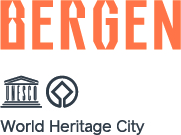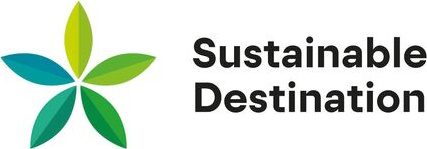Most activities leave a footprint and travelling is no exception. The Travel Industry in the Bergen region are working hard to reduce its negative footprint and increase its positive impact, but what can you do to help us a visitor?
In this list you will find ten tips to make your travels to and within the Bergen region a bit more sustainable.
1. Take the train or bus to Bergen
A good place to start is to choose an environmental-friendly mode of transport when traveling to Bergen. Trains in Norway have about a tenth of the emissions compared to commercial airlines, and the Bergen Railway has been run on renewable energy since 1964! The train ride from Oslo to Bergen takes about seven hours. This scenic ride takes you through some of the most beautiful landscapes in southern Norway. It is also possible to take the overnight train and wake up in the city centre of Bergen, but then you’ll miss the beautiful view along the line.
There is also a variety of bus routes connecting cities and towns across southern Norway, for example the Kystbussen from Stavanger and Haugesund, Vy Express, from Stavanger, Kristiansand and Ålesund, or with Nor-Way Bus Express from Lillehammer, Flåm or Voss.

Photo: Øivind Haug
There is also a variety of bus routes connecting cities and towns across southern Norway, for example the Kystbussen from Stavanger and Haugesund.
2. Use your feet or public transportation
Bergen has a compact city center, and most attractions can be reached within a 15-minute walk. If you want to feel the wind in your hair you can rent a bike from Bergen Bike Rent (April - October) or from Bergen Bysykkel using their mobile app. The City Bike pickup and drop off points are scattered all around the city.

Photo: The world’s longest purpose-built cycling tunnel from Bergen city center to the suburb Fyllingsdalen. (7.8 kilometers). Visit Bergen / Espen Bakketun - visitBergen.com
Outside the city center you can take advantage of well-developed public transportation with a variety of low-emission buses (either electric or biofuel powered) or the Bergen Light Rail. With the Bergen card you get free admission on all public transport in the whole of the Bergen region. (The Airport Bus gives a discount with the Bergen Card). You can buy the Bergen Card online here, at the Tourist Information at the Fish Market or at selected hotels and camp sites.
3. Go electric in the Bergen region
The West Coast of Norway is characterised by islands, steep mountains, fjords and valleys. Sometimes it can be challenging to explore the whole region using public transport. If you plan on renting a car, we suggest you go electric. Norway and The Bergen region has one the highest share of electric vehicles in the world. With a well-developed network of charging stations, you don’t have to worry about the cars range. Use the charging stops to explore the places and nature along the way.
Here you can read more about driving to Bergen and where you should stop along the way.
Bergen is also the heart of the fjords, and a fjord cruise is on the list of many visitors. Between Flåm and Gudvangen, there are daily departures with electric fjord cruises through the Nærøyfjord, a UNESCO World Heritage Site. The round-trip Norway in a Nutshell® is a popular tour starting in Bergen, which combines train, electric boat and bus. 
Photo: Sverre Hjørnevik
4. Stay a day or two longer in the Bergen region
Did you know that staying for a longer period at your chosen destination is one of the most important things you can do to lower the environmental footprints? When guests choose to stay longer, the demand for new guests arriving declines and with it the emissions related to transportation. And by staying longer in Bergen, you also get more time to really explore the city and region!

Photo: Visit Bergen / Casper Steinsland - visitBergen.com
5. Support local businesses by booking directly from local suppliers
Large international booking platforms have long since entered the travel industry. These platforms can make it easier for guests to sort information, but they also take a large share of the value creation without contributing back to the local collaboration at the destination. By booking accommodation and experiences directly from local suppliers, you can be sure that a greater part of the value creation is left locally at the destination.
You will also often get the best price by shopping directly with local players. In addition, there is often easier follow-up and service in the event of changes. Something we have seen can be more challenging through third-party platforms such as GetYourGuide, Tripadvisor, Booking.com or similar.
You can be sure that all products you find on visitBergen.com and bookings made in the Tourist Information are quality assured by us in advance and are sold at the same price as the suppliers themselves. Otherwise, look for the "Member of Visit Bergen" logo in restaurants, transport companies or hotels in the Bergen region. Then you know that the company contributes back to the local cooperation at the destination.
6. Let the Eco-labels guide you
If you choose an environmentally certified tourism company, you can be sure that the company has committed itself to working systematically for more responsible operation and production. A certification does not mean that the company is completely sustainable, but that it works continuously to improve. Look for the "Travel Green" label on visitBergen.com to find environmentally certified providers. The symbol is intended to make it easier for you as a guest to find environmentally certified companies.

The following certification schemes is included in the symbol: Ecotourism Norway, The ecolabel Nordic Swan, Eco-Lighthouse, Green Key, ISO 14001 and Blue Flag.
The Green Travel symbol is administrated by Visit Norway, you can read more about the symbol on visitnorway.com here.
Feel free to use our search to find environmentally certified activitiesor places to eat in the Bergen region.
7. Great experiences with low emissions
Bergen offers a great selection of experiences that have a low environmental footprint. The Fløibanen funicular takes you up to one of the greatest views of Bergen. The funicular is almost exclusively powered by the counterweight of the second carriage riding down the mountain, pulling the other up. At the top of Mount Fløyen there are a variety of different hiking trails if you want to go for a walk. You can also rent bicycles or canoes.

Photo: Fløyen
If you wish to experience Bergen from the seaside, a ride with "Beffen " is a great alternative. One of the boats, “BEF 3”, is powered by electricity. Beffen takes you to Nordnes, where you can visit the Bergen Aquarium to see the penguins or take a swim in the sea water pool at Nordnes Seawater pool . In the summer season you can take the boat to Sandviken, where you can visit the Old Bergen Museum, an open-air museum or the Norwegian Fisheries Museum. At the Fisheries Museum you can also borrow a kayak free of charge, in return for picking up any trash or rubbish you find while paddling (available in the summer season).

Photo: Norges Fiskerimuseum - Museum Vest/Silje Robinson
It is also popular to explore Bergen by bike. The trip through the world's longest purpose-built bicycle tunnel can be cycled all year round and is an attraction in itself
8. Environmentally friendly activities
Buying products that are not used when you get home is a source of unnecessary waste, and it is also expensive. Investigate whether it is possible to rent the equipment you need for your next activity. It is for example possible to rent baby and children's equipment you need for the trip. This page offers a detailed guide to all rental options for your trip to and within the Bergen region.
Otherwise, check out some of the sharing platforms for equipment rental, for example Hygglo.
9. Eat locally sourced, seasonal, plant-based or organic food
More and more people prefer to eat more sustainably and this often means choosing food/drink that is either locally produced, in season, plant-based or organic.
It is easy to find local food in season in Bergen. The city has proud seafood traditions, and the Bergen fish soup or "persetorsk" are classics you cannot miss! The Bergen region also has a number of producers of award-winning local produce such as cheese, gin and cider. By buying local food, you help to maintain local food traditions and jobs. Shorter distance from farm to table, also means less transportation, which results in a slightly lower climate footprint.
Many restaurants in Bergen focus on plant-based food and you will find a rich selection of restaurants that offer both vegetarian and vegan food.
Organic food is offered at Godt brød or Pygmalion's eco cafe. Read more about Bergen City Gastronomy here.
Meet the owner of Lysverket, Christopher Haatuft, and learn more about food in Bergen on this podcast:

Photo: Ida Skeie - Cornelius Seafood Restaurant
10. Learn about the local culture and history
Bergen is one of the oldest and largest cities in Norway, and with this comes a great cultural heritage. By visiting one of the many museums in Bergen and the region you contribute to the preservation of the local culture and history.
About a twenty-minute walk from the Bryggen you can find The University Museum of Bergen. It holds both a natural science museum and a museum of cultural history. (The cultural museum is closed to renovation). At the natural history museum, you can study huge whale skeletons or learn more about climate change and how we as humans affect it.
The Textile Industry Museum gives you insight into the textile industry and how it affected the industrialization of Norway. At the Heathland Centre you can experience the 5000-year-old cultural landscape of the Heathlands, a UNESCO Biosphere site, and the last place in Europe where this cultural landscape is preserved.

Photo: The Heathland Centre - The Museum Centre in Hordaland
Thank you for choosing to make more sustainable choices on your trip to Bergen and the region!
Bonus tip:
Travel off season for more space and less congestion at the most popular sights, such as Bryggen and Fløibanen funicular.
 to add an item to your Itinerary basket.
to add an item to your Itinerary basket.












